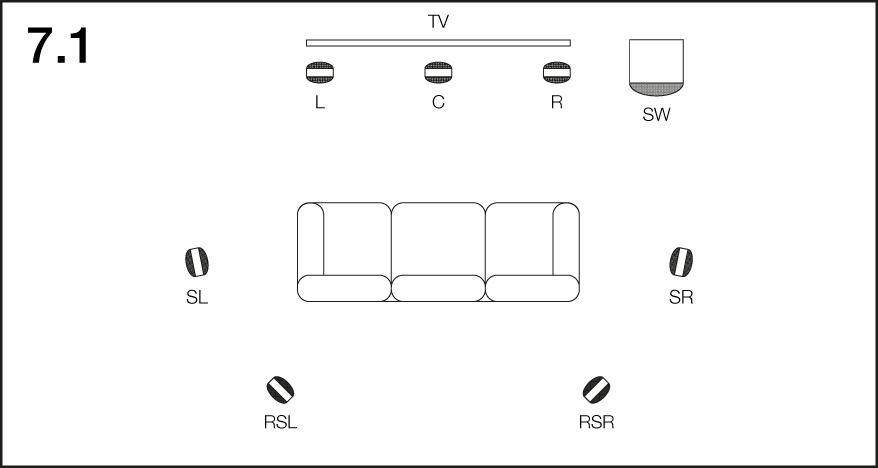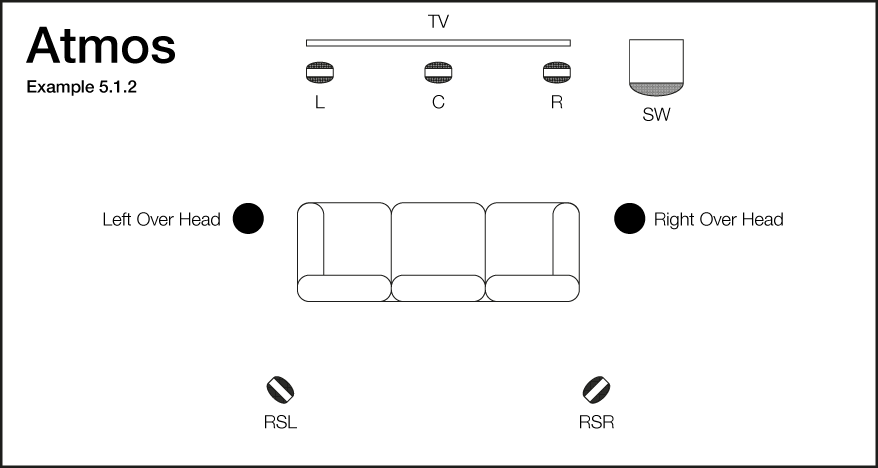5.1 or 7.1 system, what's the difference?
Read Monitor Audio's guide to surround sound systems to find the best configuration for your own home cinema.

Everyone loves going to the cinema to see the latest blockbusters on the big screen, but what if you could bring that experience home? Well we’ve put together this guide to creating your own home cinema system, so you can get the same immersive experience without the guy behind kicking your chair.
What you’ll need
You’ll need a few pieces of kit to create that cinema experience at home, including:
- TV or projector
- Set of speakers and a subwoofer (we’ll talk about configurations later on)
- AV Receiver / Amplifier (dependant on your configuration)
- Media players (such as a Blu-ray player, streaming box or games console)
- Media like a movie or a game that features a multi-channel soundtrack
Speaker channels
Left and right channels
The left and right channels provide as you could guess directional left and right sound. This includes stereo music tracks, directional dialogue and on screen action. The left and right channel tweeters should be about ear-level for the best effect.
Centre channel
The centre channel bridges the gap between the left and right, giving a seamless allusion between the channels, this means about 60% of a movie's soundtrack comes through the centre channel. It’s also where most of the dialogue comes from, as dialogue is usually delivered at the centre of the frame. Again for the best effect, the tweeter frome the centre channel should be about ear-level.
Surround channels
Surround channels are usually placed to the side or the rear of the audience and complete the near 360º effect. You’ll usually hear action that you cannot see in the frame, such as background noise, debris etc. Monitor Audio surround channels are usually called FX.
Speaker configurations
5.1
The most common surround sound configuration is what we call a 5.1, this means there are five speaker channels and one subwoofer.
The five speaker channels are Left, Centre, Right, Rear Surround Left and Rear Surround Right.
This configuration is support by pretty much every movie and game release, it’s also the standard for television programmes produced in surround sound.

7.1
The next step up for surround sound is a 7.1, this means there are seven speaker channels and one subwoofer.
This configuration adds an extra two side speakers to the mix, which helps split out audio from the front and rear surround speakers, creating an even greater 360º sound effect.
The seven speaker channels are Left, Centre, Right, Surround Left, Surround Right, Rear Surround Left and Rear Surround Right.

Dolby Atmos
Dolby Atmos expands on the classic 5.1 and 7.1 configurations with extra In-Ceiling or Dolby Atmos enabled speakers, with a number only limited by your AV receiver. This enables more exact sound placement, delivering an even more immersive experience.
Atmos speakers are denoted by an extra period then the number of Atmos channels such as 5.1.2 meaning five surround channels, one subwoofer and two Atmos speakers.

You can read our guide on Atmos at https://www.monitoraudio.com/en/blog/getting-started-with-dolby-atmos/
Experience surround sound at home with Monitor Audio
Monitor Audio has got surround sound solutions to suit any room at any budget, from their small and stylish MASS Surround Sound system to their incredibly refined Gold Series 5.1.
|